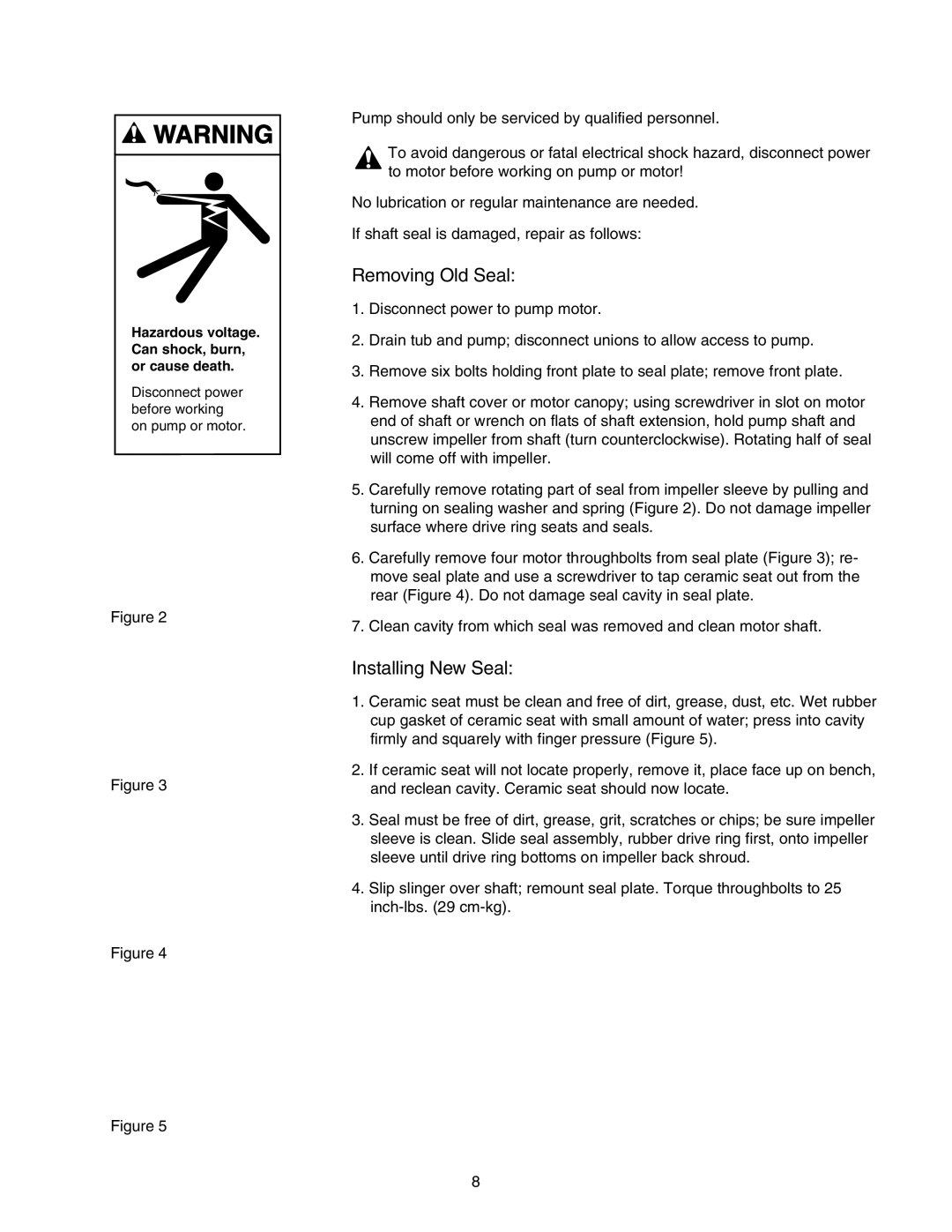
Hazardous voltage. Can shock, burn, or cause death.
Disconnect power before working on pump or motor.
Figure 2
Figure 3
Figure 4
Figure 5
Pump should only be serviced by qualified personnel.
To avoid dangerous or fatal electrical shock hazard, disconnect power to motor before working on pump or motor!
No lubrication or regular maintenance are needed.
If shaft seal is damaged, repair as follows:
Removing Old Seal:
1.Disconnect power to pump motor.
2.Drain tub and pump; disconnect unions to allow access to pump.
3.Remove six bolts holding front plate to seal plate; remove front plate.
4.Remove shaft cover or motor canopy; using screwdriver in slot on motor end of shaft or wrench on flats of shaft extension, hold pump shaft and unscrew impeller from shaft (turn counterclockwise). Rotating half of seal will come off with impeller.
5.Carefully remove rotating part of seal from impeller sleeve by pulling and turning on sealing washer and spring (Figure 2). Do not damage impeller surface where drive ring seats and seals.
6.Carefully remove four motor throughbolts from seal plate (Figure 3); re- move seal plate and use a screwdriver to tap ceramic seat out from the rear (Figure 4). Do not damage seal cavity in seal plate.
7.Clean cavity from which seal was removed and clean motor shaft.
Installing New Seal:
1.Ceramic seat must be clean and free of dirt, grease, dust, etc. Wet rubber cup gasket of ceramic seat with small amount of water; press into cavity firmly and squarely with finger pressure (Figure 5).
2.If ceramic seat will not locate properly, remove it, place face up on bench, and reclean cavity. Ceramic seat should now locate.
3.Seal must be free of dirt, grease, grit, scratches or chips; be sure impeller sleeve is clean. Slide seal assembly, rubber drive ring first, onto impeller sleeve until drive ring bottoms on impeller back shroud.
4.Slip slinger over shaft; remount seal plate. Torque throughbolts to 25
8
